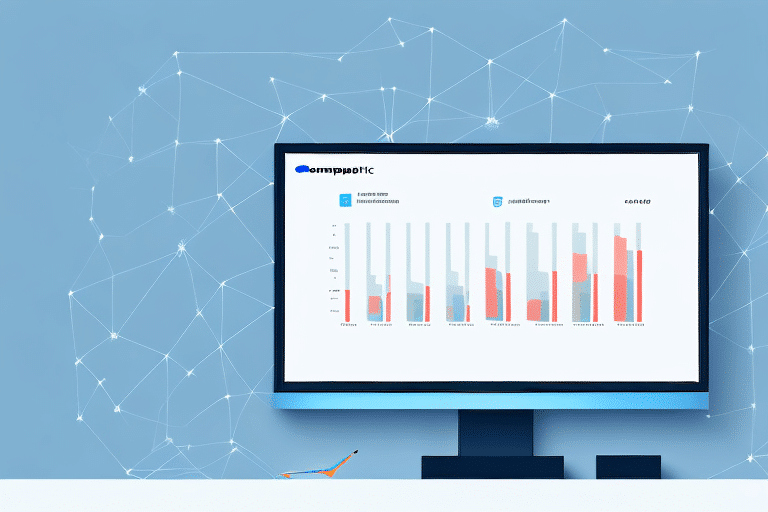How to Connect, Optimize, and Manage LSO for QuickBooks Commerce
If you're running an e-commerce business, efficient order fulfillment is crucial to your success. One tool that can help streamline this process is LSO, or Local Shipping Optimization. LSO allows you to split orders into multiple shipments and select the best carrier for each shipment, resulting in faster and more cost-effective shipping. In this article, we'll explore everything you need to know to connect, optimize, and manage LSO for QuickBooks Commerce.
Understanding Local Shipping Optimization (LSO)
LSO, or Local Shipping Optimization, enables you to optimize the shipping process on a local level by selecting the best carrier for each package based on factors like distance, delivery time, and cost. This can lead to significant cost savings for your business while improving the customer experience by ensuring timely and efficient delivery.
Benefits of Implementing LSO
- Cost Savings: By splitting orders and using the most cost-effective carriers, businesses can reduce shipping expenses.
- Improved Delivery Times: Selecting the best carrier for each shipment ensures faster delivery, enhancing customer satisfaction.
- Enhanced Shipping Options: Offering multiple shipping options caters to diverse customer needs and preferences.
- Sustainability: Optimizing carrier selection based on proximity can reduce the carbon footprint associated with shipping.
According to a Statista report, 80% of customers consider delivery speed a crucial factor in their purchasing decisions, highlighting the importance of efficient shipping processes.
Setting Up LSO in QuickBooks Commerce
Getting started with LSO in QuickBooks Commerce is a straightforward process. Here's how to set it up:
- Activate LSO: Navigate to your account settings and activate the LSO feature.
- Configure Carrier Accounts: Set up your preferred carriers. QuickBooks Commerce supports a wide range of carriers, including UPS, FedEx, DHL, and USPS.
- Set LSO Preferences: Customize your shipping settings, such as splitting orders and selecting carriers based on predefined criteria.
Once configured, you can create and print shipping labels directly from QuickBooks Commerce, saving time and reducing errors. Additionally, LSO allows real-time shipment tracking, keeping your customers informed about their order status.
Configuring LSO Settings for Optimal Performance
Split Shipments and Weight Thresholds
LSO enables you to split orders into multiple shipments based on product or weight. For instance, you can set weight thresholds that trigger split shipments, ensuring that each package is sent using the most efficient carrier.
Shipping Zones and Rates
Define specific geographic regions and assign different shipping rates to each zone. This allows you to tailor your shipping strategy based on regional demands and carrier performance.
Carrier Integration
Integrate with various shipping carriers to compare rates and select the best option for each shipment. This integration also facilitates real-time tracking and automatic label generation.
Optimizing LSO Settings for Maximum Efficiency
To maximize the efficiency of your LSO settings, consider the following strategies:
- Regularly Review Settings: Analyze shipping data to identify areas for improvement and adjust settings accordingly.
- Accurate Shipping Information: Ensure that shipping addresses are accurate to prevent delays and errors. Utilize address validation tools to maintain data integrity.
- Appropriate Packaging: Use the right packaging materials to protect your products during transit, reducing the risk of damage and returns.
Implementing these strategies can lead to a more streamlined shipping process and enhanced customer satisfaction.
Managing Orders and Fulfillment with LSO
LSO in QuickBooks Commerce allows you to efficiently manage orders and fulfillments by:
- Selecting the optimal carrier for each package.
- Automatically generating shipping labels.
- Tracking shipments in real-time.
This streamlined process frees up time to focus on other aspects of your business, such as marketing and product development.
Automated Rules for Order Fulfillment
Set up automated rules to assign carriers based on package weight, destination, or other criteria. This ensures consistency and efficiency in your fulfillment process.
Troubleshooting Common LSO Issues
While LSO is designed to simplify your shipping process, you may encounter some issues:
- Carrier Integration Problems: Ensure that carrier accounts are correctly set up and authenticated.
- Incorrect Shipping Rates: Verify package weight and dimensions to ensure accurate rate calculations.
- Package Size Limitations: Be aware of carrier-specific size and weight restrictions to prevent shipment rejections.
If you encounter issues, consult QuickBooks Commerce support or refer to carrier-specific guidelines to resolve them efficiently.
Leveraging LSO Reports for Business Insights
LSO provides valuable reporting features that offer insights into your shipping operations:
- Shipping Costs: Analyze your shipping expenses to identify cost-saving opportunities.
- Delivery Times: Monitor delivery performance to ensure timely shipments.
- Carrier Performance: Evaluate carrier efficiency and reliability to inform your carrier selection.
Utilize these reports to make data-driven decisions that enhance your shipping strategy and overall business performance.
Integrating LSO with Other Tools and Services
Enhance LSO capabilities by integrating it with other essential tools:
- E-Commerce Platforms: Integrate with platforms like Shopify, Magento, and WooCommerce to streamline order management and fulfillment.
- Shipping Automation Tools: Use tools like ShipStation for advanced shipping automation and label generation.
- Accounting Software: Integrate with QuickBooks and Xero to synchronize sales data and manage finances efficiently.
- CRM Systems: Connect with CRM software like Salesforce or HubSpot to track customer interactions and order history.
These integrations allow for a more cohesive and efficient workflow, enhancing overall business operations.
Best Practices for Using LSO in QuickBooks Commerce
Regularly Review and Adjust Settings
Consistently analyze shipping data and adjust your LSO settings to reflect changes in your business needs and market conditions.
Monitor Carrier Performance
Keep track of carrier efficiency and reliability. Switch carriers if necessary to maintain high service standards and cost-effectiveness.
Clear Communication with Customers
Clearly communicate shipping options and provide timely updates on order status to enhance customer satisfaction and trust.
Maintain Accurate Inventory Levels
Ensure that your inventory data is up-to-date to prevent overselling and ensure timely order fulfillment. Implement inventory alerts to manage stock levels effectively.
Streamlining Your LSO Workflow: Tips and Tricks
Utilize Automation Tools
Incorporate automation tools like ShipStation to further streamline your shipping process, reducing manual effort and minimizing errors.
Organize Your Inventory Efficiently
Implement an organized inventory system, such as a barcode system, to quickly locate and package items, thereby speeding up order fulfillment.
Regularly Update Shipping Policies
Keep your shipping policies and procedures updated to reflect current best practices and industry standards. This ensures that you provide the best possible service to your customers.
Maximizing the Benefits of LSO for Your E-Commerce Business
By effectively connecting, optimizing, and managing LSO in QuickBooks Commerce, you can significantly enhance your e-commerce operations. LSO helps reduce shipping costs, streamline the fulfillment process, and improve the overall customer experience. By adhering to best practices, regularly reviewing settings, and integrating LSO with other essential tools, you can fully leverage this powerful shipping optimization tool to drive your business growth.






















